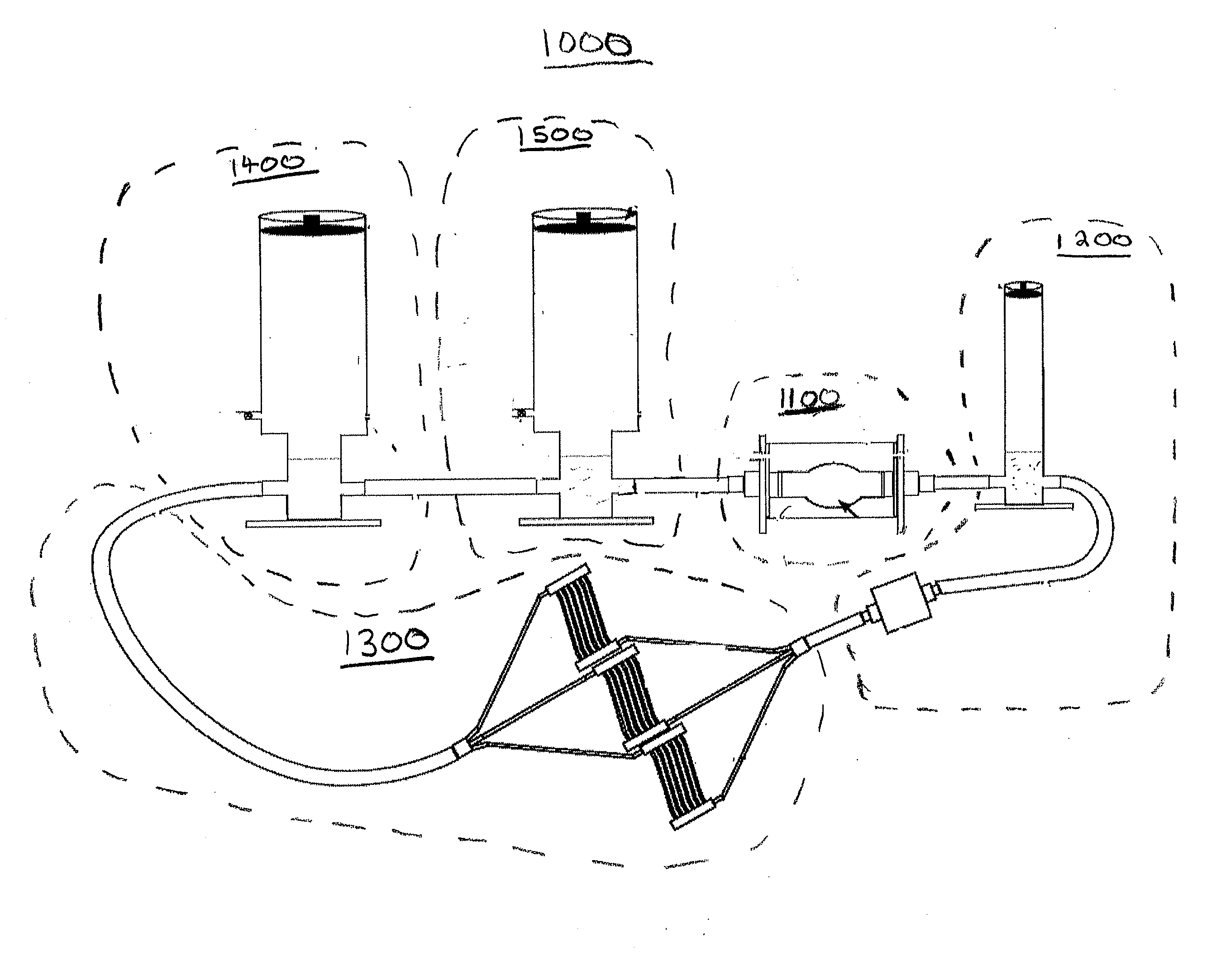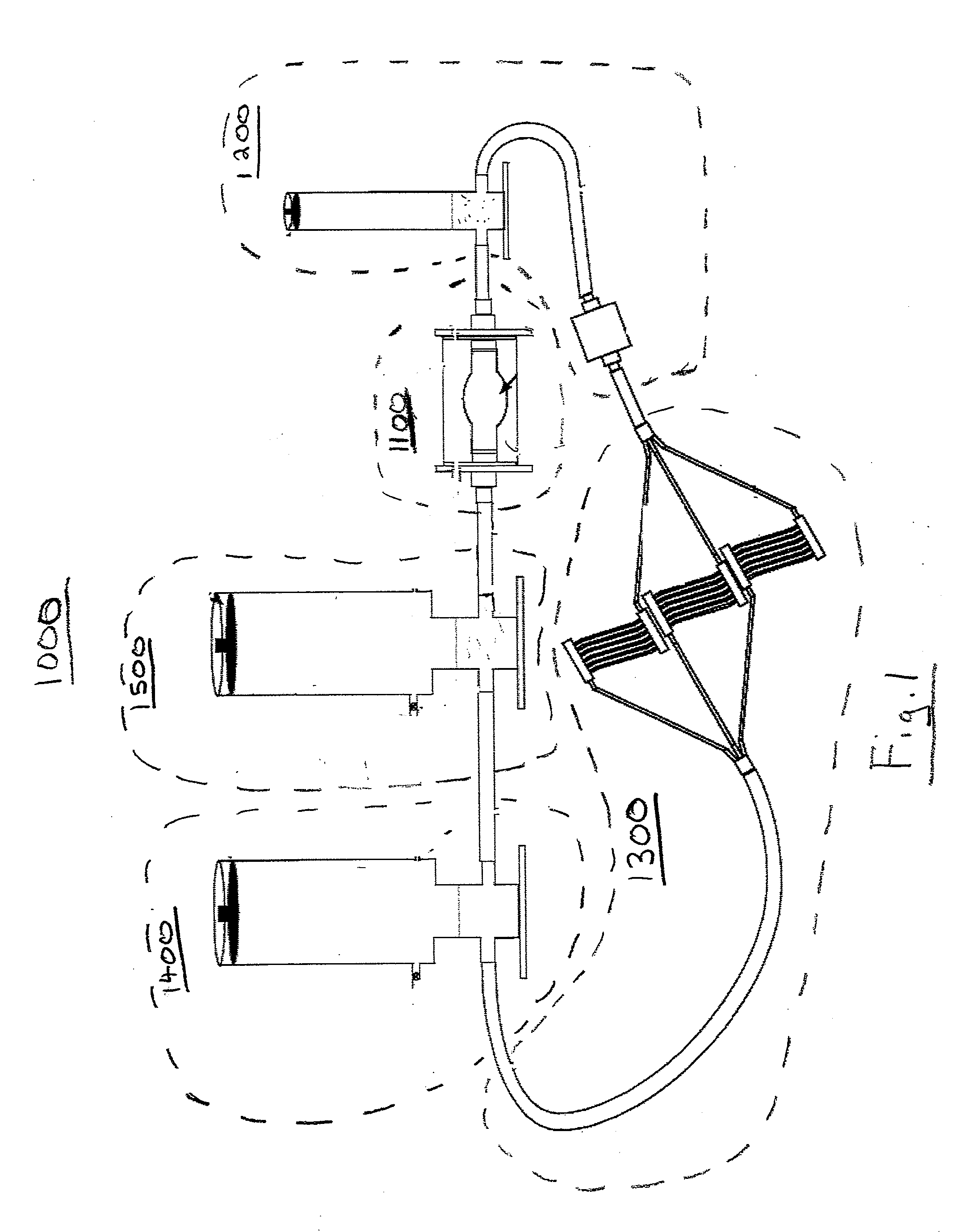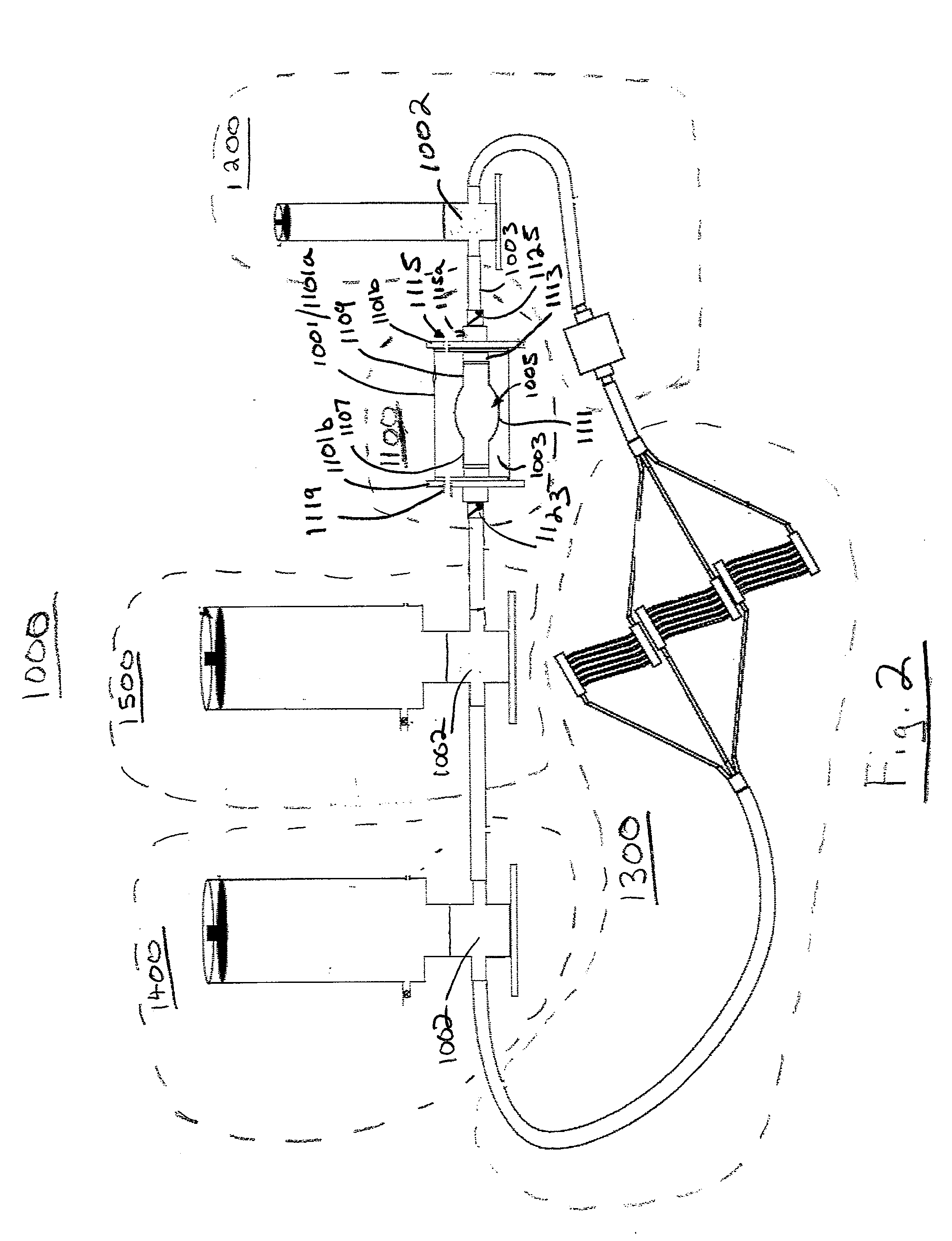Mechanical Model of the Cardiovascular System and Method of Demonstrating the Physiology of the Cardiovascular System
a mechanical model and cardiovascular system technology, applied in the field of anatomy modeling, can solve the problems of inability to accurately study peripheral vascular flow, and inability to demonstrate appropriate diastolic volumes
- Summary
- Abstract
- Description
- Claims
- Application Information
AI Technical Summary
Benefits of technology
Problems solved by technology
Method used
Image
Examples
Embodiment Construction
[0088]The invention relates generally to a hydraulic model of the cardiovascular system used to illustrate a plurality of physiological concepts and relationships including arterial compliance, venous compliance, arterial resistance, the various effects of ventricular filling pressure and filling time on cardiac stroke volume, hypertension and exercise.
[0089]The cardiovascular model is a plurality of subsystems that operate together with the assistance of a computer, electromechanical controls, and manually operated parameters. The subsystems include a.) a cardiac subsystem for moving a fluid in a singular direction in a closed hydraulic system; b.) an arterial subsystem for modeling arterial compliance, the arterial subsystem fluidically coupled with the cardiac subsystem to receive the fluid discharged from the cardiac subsystem; c.) a peripheral resistance subsystem for modeling peripheral resistance, the peripheral resistance subsystem fluidically coupled with the arterial subsy...
PUM
 Login to View More
Login to View More Abstract
Description
Claims
Application Information
 Login to View More
Login to View More - R&D
- Intellectual Property
- Life Sciences
- Materials
- Tech Scout
- Unparalleled Data Quality
- Higher Quality Content
- 60% Fewer Hallucinations
Browse by: Latest US Patents, China's latest patents, Technical Efficacy Thesaurus, Application Domain, Technology Topic, Popular Technical Reports.
© 2025 PatSnap. All rights reserved.Legal|Privacy policy|Modern Slavery Act Transparency Statement|Sitemap|About US| Contact US: help@patsnap.com



